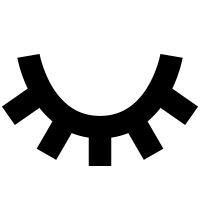Recycling 101: Change Begins at Home
- Valeria Solonari
- Apr 6, 2022
- 3 min read
Updated: Oct 20, 2023
What Is Recycling, What Can Be Recycled & What to Do with Garbage?

Recycling is the process that waste materials undergo when collected and transformed into new materials, in order to be used or sold as new products. The recycling process has become an activity that helps solve many problems caused by the tons of solid waste we produce every day around the world. All a consequence of modern day life.
Reasons to Instil the Habit of Recycling in Children
Recycling means helping to protect the environment and to stop environmental pollution. Those kids who participate and contribute to collecting, separating and recycling have a different way of conceiving life and perceiving their natural environment.
Garbage is a big daily problem that we must combat. Apart from industries, people are the first to consume and pollute, but are also the main affected. Not only does garbage generate bad odours in the streets, but also infections and even diseases that put our health at risk.
There are many reasons to recycle. Resources are saved, pollution is reduced, the life of materials is extended through different uses, energy is saved, deforestation is avoided, the space occupied by waste is reduced by 80%, and the list doesn't stop there.
How to Contribute to Recycling as a Family?
It is advisable to start by reducing the amount of garbage generated at home. How can we do this? One idea can be to reuse organic waste to fertilize the plants. We can also reuse packaging and other containers for new uses at home, school or at work.
For the classification of waste, it's necessary to have at least two trash bins. One of them will be used for organic waste and the other for reusable material. Paper and textiles must be clean, dry and preferably stacked and tied. Plastic containers must be rinsed to avoid bad odours. Metals and glass should be sheathed at their cutting edges.
What Can Be Recycled?
90% of household garbage is recyclable. Apart from organic waste* – glass containers, fine plastic, thick plastic, cardboard, cans, paper, broken glass, batteries, metals and fabrics, are all valuable materials often times discarded. For this reason, it's important that we separate the garbage in our house and deposit it in the appropriate containers.
For recycling, there is a basic rule: sort from the source. This means to carefully separate the waste before it gets mixed with other types of garbage. In addition to taking advantage of what's thrown away, you also save large amounts of energy coming from non-renewable resources such as oil, coal and gas.
*Some organic waste is used to make natural fertilizers or compost. That improves the quality of the land without harming it, unlike chemical fertilizers and artificial fertilizers.
The Need to Separate Garbage
Much of the success of recycling programs depends on the collaboration of all consumers, adults and children. If you properly separate your daily household waste and deposit in designated public containers, then the most difficult part in recycling domestic waste is done.
The need to separate garbage is being carried out through campaigns aimed at families, so they contribute to the good of society and environment. By waste sorting correctly before it becomes garbage, you can save or greatly reduce a large part of our living space.
Acumé Magazine
Published April 2022












Comments